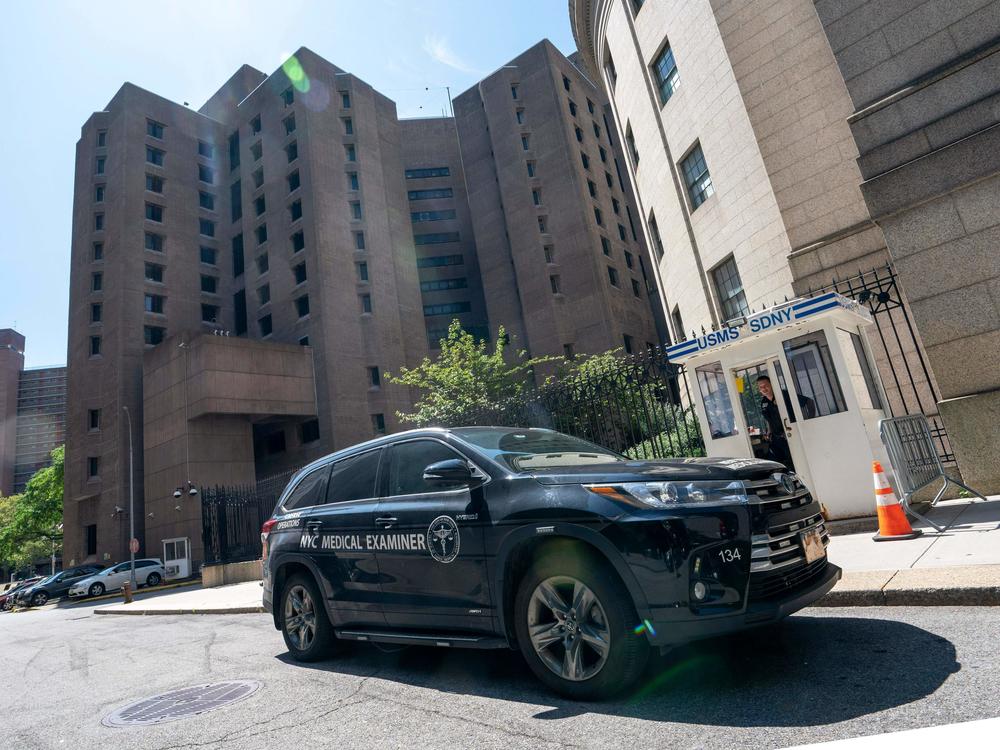Section Branding
Header Content
DOJ watchdog finds 187 inmate suicides in federal prisons over 8-year period
Primary Content
Over an eight-year period, 344 inmates in federal prison died from suicide, homicide or accidents, according to a report released Thursday by the Justice Department's inspector general.
The watchdog's report comes in the wake of several high-profile deaths in federal lockups in recent years, most notably the murder of Boston mobster James "Whitey" Bulger and the suicide of convicted sex trafficker Jeffrey Epstein.
Those deaths put a spotlight on the long-standing failures and challenges within the federal Bureau of Prisons, a sprawling system that currently houses some 155,000 inmates across more than 100 facilities.
"Today's report identified numerous operational and managerial deficiencies, which created unsafe conditions prior to and at the time of a number of theses deaths," Inspector General Michael Horowitz said.
The report examines four categories of non-medical deaths in the federal Bureau of Prisons, or BOP, between 2014 and 2021: suicide, homicide, accident and unknown factors (when there was not enough information to definitively determine the cause of death).
Of the 344 inmate deaths the internal watchdog found over that time period, more than half of them — 187 — were suicides. Homicides were the next biggest category with 89, followed by 56 accidents and 12 unknown.
Hanging was the most common cause of death, followed by drug overdose and blunt force trauma.
The chairman of the Senate Judiciary Committee, Democrat Dick Durbin of Illinois, said that Horowitz and BOP Director Collette Peters will appear before the panel on Feb. 28 for a hearing focused on deaths in the federal prison system.
"It is deeply disturbing that today's report found that the majority of BOP's non-medical deaths in custody could have been prevented or mitigated by greater compliance with BOP policy, better, staffing, and increased mental health and substance abuse treatment," Durbin said in a statement. "Accountability across the Bureau is necessary and long overdue."
The report says that the BOP has policies in place to try to prevent inmate suicides, including identifying potentially suicidal inmates, managing medication and housing decisions.
But it says that combination of both policy violations and operational failures contributed to the suicides.
In many instances, it says, an inmate was inappropriately deemed to not be a suicide risk, only to then die by suicide. The report also found that more than half of the inmates who died by suicide were housed in a cell alone, which increases suicide risk.
"We also found that some institution staff failed to coordinate efforts across departments to provide necessary treatment or follow-up with inmates in distress and that staff did not sufficiently conduct required rounds or counts in over a third of the inmate suicides in our scope," the report said.
It was a series of such failures that played a role in Epstein's suicide at the Metropolitan Correctional Center in Manhattan in 2019.
The report says that several chronic, system-wide challenges were a factor in many of the documented inmate deaths.
The BOP continues to grapple with a severe staffing shortage, which has a ripple effect across the agency's institutions. That forces guards to work overtime, which leads to exhaustion and negatively affects security.
It also means that health care workers, including those that focus on mental health, often get pulled from their regular jobs to work shifts as guards. That translates into less mental health care for inmates.
BOP facilities also continue to struggle to keep their facilities free of contraband drugs and weapons, which contributed to nearly 1 in 3 inmate deaths in the report.
The report also points to problems with — or the lack of — security cameras.
"Although the BOP has taken some steps to being addressing these issues, the BOP must employ a comprehensive approach to address these chronic challenges and continue to prioritize corrective actions in these areas if it is to maintain a safe and secure environment for both staff and the inmates in its custody," the report says.


